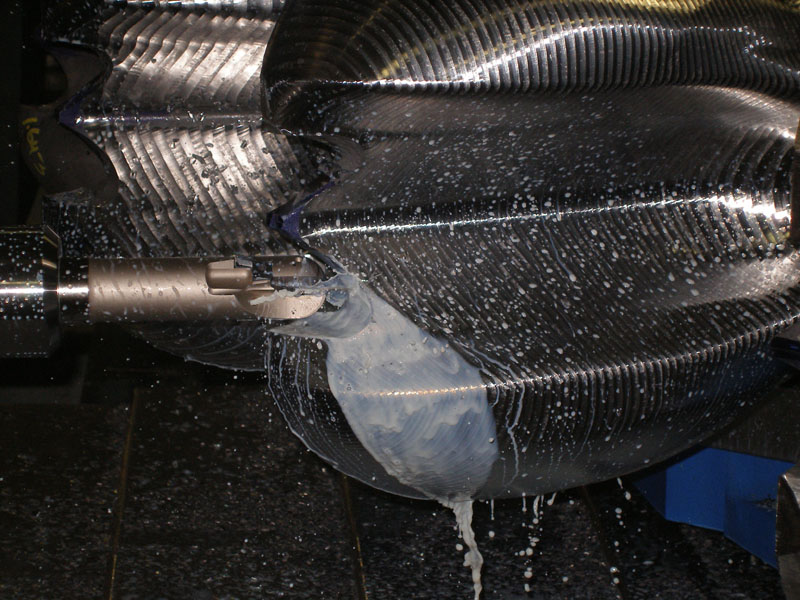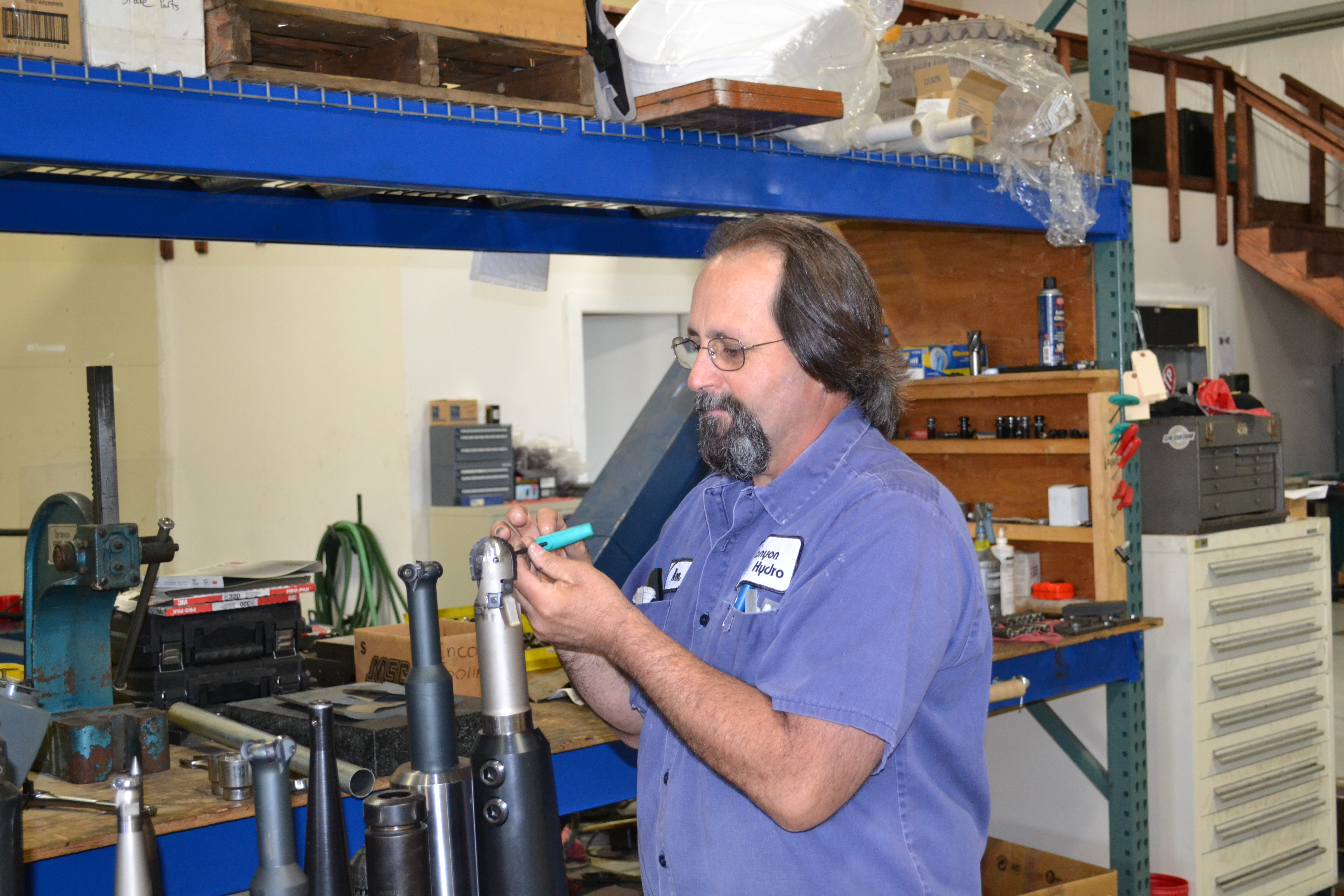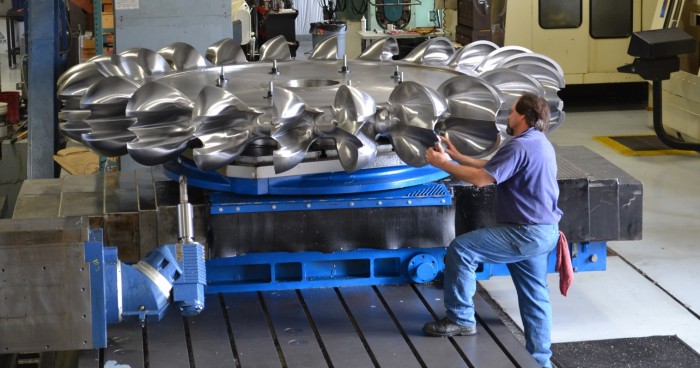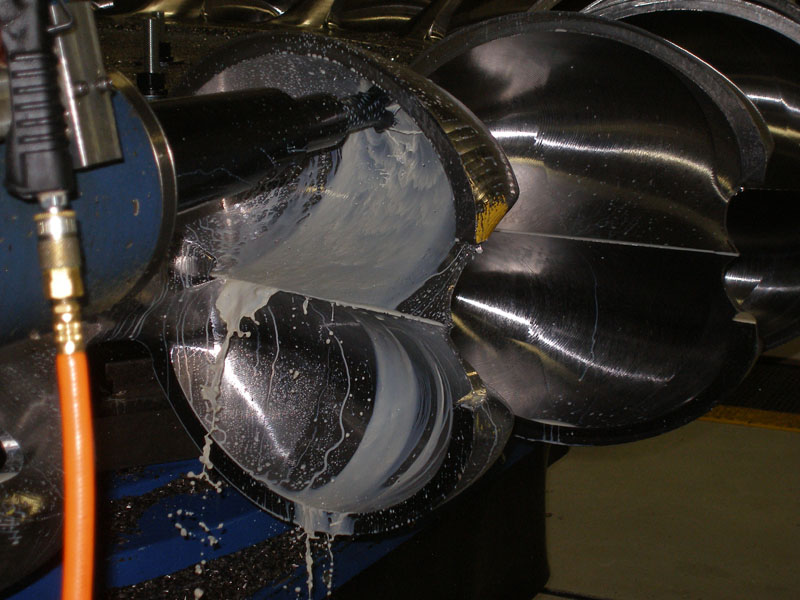Completing a Bucket List in Hydro Impeller Machining
By strategically moving to CNC automation and advanced tooling from Ingersoll Cutting Tools, this complex machining job at Canyon Hydro is now completed much faster and with much less operator attention as cycle times dropped by 50 percent, labor costs are virtually nil and tool life is reliable enough to run a lights out operation.
Posted: August 21, 2012
A state-of-the art CNC machining center makes a Deming, WA manufacturer the nation’s leading supplier of large hydropower generating systems west of the Mississippi – right in the heart of the hydropower market. And some advanced tooling and heavy customer support from Ingersoll Cutting Tools (Rockford, IL) helped make it happen.
As a result, Canyon Hydro completes huge ten-ton rotors (called runners in the hydropower industry) in one third the time as before, with much better accuracy and surface finish for higher efficiency over the runners’ projected 30-40 year service life. The runner is the heart of a hydropower turbine, converting water flow to the rotary motion that drives the generators.
The key machining challenge is to contour-mill the runner buckets, which are essentially the paddles on a very sophisticated paddle wheel where every machined surface has a hydrodynamically correct curvature. A typical runner is made from a stainless steel casting and weighs ten tons, measures 11 ft across and has 22 carefully contoured double buckets. It can take months of continuous five-axis, long-reach milling to complete, leaving behind a ton and half of stainless steel chips.
Virtually all milling involves 19 in shank lengths. Nevertheless, at the end, as-machined surfaces must be smoother than 32µ and geometrically correct within 0.010 in to prevent turbulent flow while in service. “This is like a large-scale cavity milling job, with one important difference,” says Chris Murray of Ingersoll, who devised the tooling solution. “The contour on each bucket involves undercuts that you would never see in an injection mold.”
A STRATEGIC PROCESS CHANGE
Canyon Hydro, which is headquartered in Deming, previously finished the buckets by manual grinding and using CAD/CAM templates to check dimensions and contours. Typical cycle times for an 11 ft runner were six months, requiring 100 percent attendance by skilled operators. Typical tolerances were 0.035 in to 0.040 in. The process was more than adequate for its time: back in an era of low oil costs and easier environmental regulations, which left hydropower as a secondary source of power along with solar, wind and nuclear.
Anticipating greater demand for alternate energy sources including hydropower, in 2009 the company made the strategic decision to automate runner machining. They built a free-standing, lights-out capable CNC center just a few towns away in Sumas.
The key machine is an FPT five-axis CNC floor type horizontal mill equipped with a 2-axis rotary table, 80-station automatic tool changer and two interchangeable heads: a 360 deg universal 3+2 bi-rotational head and a 29 in extension head. A skeleton crew of two to four CNC machinists works 8-hour shifts to handle support functions as the machine runs largely unattended, sometimes overnight as needed to maintain delivery schedules. “The chipmaking itself is essentially hands-off,” notes manufacturing engineer Mike Hansen.
As for tooling solutions, Hansen invited proposals from all mainline vendors, stressing the long-reach aspect of the process along with the need for lights-out process security, exceptional accuracy and standard tooling. “Cycle time savings were really secondary to repeatable accuracy and smooth finish,” he recalls, “as we knew the business would become more efficiency-competitive. Standard tooling was essential to eliminate all the uncertainties and expenses inherent in special tooling.”
Nevertheless, most of the vendors proposed special tools or asked for up-front money for development. Only Murray offered full application support for free and he even found a standard tool able to do most of the job and a modified-standard to handle the rest. “It was their up-front helpful attitude that led to our choice,” Hansen says. “Sure, we would test each of Chris’ ideas in trials later on, but only to verify recommendations and optimize parameters, not to pick a vendor. We were looking for a marriage, not just a first date.”
The company started up by automating the smaller runners with diameters down to 4½ ft, then gradually working up to the larger parts. The smaller runners were handled by a standard 1 in Form-Master Pro that is specially suited for long-reach roughing and finishing.














